|
There's still two weeks left of the plays, plenty of time to click the button and get yourself some tickets to see some professional theatre. If you buy tickets to three shows you get the fourth show for free, just type in Season in the promotional code box. The Texas Shakespeare Fest: "Where Do They Get Those Costumes?" Great article with video of the costume shop. Costume Department
Designer, Brandon R. McWilliams holds a Bachelors of Fine Arts in Theatre Studies from The University of Texas at Austin and a Master of Fine Arts in Costume Design from the Carnegie Mellon School of Drama. He has designed regionally for the past fifteen years and is the recipient of the Zelma H. Weisfeld USITT Costume Design Award and two-time recipient of the Elizabeth Shrader Kimberly Award in Costume Design. His work has been on display at the Prague Quadrennial ’07, as well as at the Carnegie Mellon University campus in Qatar. He has taught at Carnegie Mellon University, Salisbury University, the University of North Carolina at Charlotte, Louisiana State University and currently heads the costume design program at Texas State University. www.brmcwilliams.com. UPDATE: I sent Brandon a list of questions and he was nice enough to answer them. Here's the transcript of our conversation below: Me: I've been going to TSF for the last three years now, so I have a basic understanding of the rehearsal schedule, build schedule and how much time each show is allotted in the shop. The schedule is insane so kudos to everyone involved for getting so much done in so little time. Brandon: “Thank you, yea it’s a pretty tight schedule” Me: There is one thing I am confused about. I was told three years ago by Nick Jones, who was the shop manager at the time, that the designs were submitted in February with final renderings to the shop in March. What I am confused about is, who is there to begin patterning in March and shopping for fabrics if all the staff seem to be employed at other colleges or in grad school? Who is doing all the preliminary work until everyone else finishes with their own finals? If the shop only has 5 days per show to get the whole thing built with fittings starting on Wednesday, who is doing the pulling and shopping? I'd also love to know how much time you spent in residence during the build compared to how much was accomplished through email or phone calls. Brandon: “I haven’t really noticed any pre-production work done by the shop before the company arrives, but yea, you are right that final designs along with supporting paperwork gets delivered in March. I do all pulling and shopping for the shows with the exception of foundation garments that the shop staff can typically pull. I was in residence for 6 weeks, May 18th through July 3.” Me: Clearly a lot of things were built for both of your shows. Can you point out which pieces were built for the show compared to how much was adapted from pre-existing stock? Brandon: “For Much Ado, it was pretty much fabricated in house and purchased, we did pull the townspeople from their stock, but the rest was built. Cyrano was probably a solid 50/50 at the end of the day.” Me: What I'm especially curious about, having read the costume book they published awhile back and being able to talk to Nick Jones (I got to see the shop and storage three years ago while everyone was on a break for lunch) is this: The original philosophy was to build sturdy period pieces in a neutral color palette that could be used in a lot of different shows and then to keep adding to that collection to amass a really good stock and they've clearly done that over the last 30 years. Brandon: “I’m always surprised at how usable their stock is, I’m not entirely sure that it came from a directive to design in neutrals per say, but it's happened many a times that I’ll need something and you just walk back into the stock and there it is.” Me: But after three years of seeing period pieces in neutral colors I'm wondering when/if more color in the designs is going to happen? Surely they have enough brown and creme things by now. So what were you told, if anything, about color? I have started assuming that anything I see that's an actual color was built for the show and anything that's beige, creme, tan, brown, or navy is pre-existing stock. Brandon: “I’ve never been told that I have to operate in a certain palette when I’ve worked at TSF. Color has always evolved in collaboration with the Director and other Designers.” Me: I see that you did Camelot back in 2013. What was it like coming back? What did you do differently because of your experience earlier? Brandon: “I did, I also did Winter’s Tale that year, it was great coming back, for my 3rd year now. TSF is kind of special and I have always enjoyed my time with them. Coming back in my 2nd and 3rd year was somewhat easier having known how they operate and what actually exists in their stock, its like you are just better prepared having danced the danced before.” Me: I'd love to know what your budget was for both shows. Brandon: “They seem to budget with a lump sum amount rather than in response to the sketch.” Me: Much Ado they've done three times before, Cyrano twice. Was there any conversation like, "Well, we've done it this way before, you need to be different" or the opposite "we have all this stuff from last time in stock, you should use some of it". Brandon: “There is always a bit of comfort in knowing that they have some 30 years of stock to be utilized in various ways, but there really wasn’t any directive given to be like, or different from past productions.” Me: I feel like Raymond Caldwell and John Dodd have had such a long range vision for so long, I am interested to know how much control they exert over the designs. Brandon: “A producer always has that stewardship over the visual language in a way, but I’ve never had Mr. Caldwell or Mr. Dodd exert themselves in a way that was in opposition to the direction of the design of the shows I’ve done at TSF.”
I emailed Ms. Herin (Richard III and The Marvelous Wonderettes) and was fortunate in that she agreed to answer some questions about her involvement in the festival. I found out that she also designed two of the shows we saw last year, Henry V and Carousel. Here's the link to last year's blog on the Festival so you can see more of her work. Texas Shakespeare Festival 2016 Christopher Roton, the scenic designer, also designed all the shows last year. When you click on the link you'll notice that it's not up to my usual descriptive standards and I apologize for that. My mom died last July after a long illness and it's a miracle I got anything published at all. That's why I was surprised to find out that both Angelina and Christopher had designed the shows last year--my brain just wasn't taking in any information at the time. Back to the interview with Ms. Herrin: "The design process for the shows follows what I'd consider an industry standard for professional summer theaters. The designs begin in late fall, around mid-November, when conversations with the directors begin. At this point, I've been officially engaged as a designer, received copies of the scripts, read the scripts, and done some basic analysis on the texts and characters. I have a general sense of the plays, the playwrights intentions, and can discuss the characters with a certain level of depth and understanding. I like to have all this completed before my initial conversation with the director. Conversations with the director help to give my research focus, sometimes there's a concept that needs to be reconciled with the script, and the designers need to discuss and collaborate on the overall production. The production needs to be unified so we (the director and designers) need to communicate regularly, especially at the initial stages. Between these initial conversations and the mid-February initial design deadline, I do A LOT of research and sketches. Thanks to the Internet, it's pretty easy to share my ideas and receive feedback in an expedient manner. Sketches are often modified, especially as the overall costume design takes shape and a clearer vision is realized. Final designs, which means color renderings of each character and any costume changes they undergo, are due in mid-March. Renderings include hair or wigs and makeup details, which can include tattoos, piercings, or scars in addition to basic makeup choices. This deadline may seem rather early but these designs need to be reviewed by the director of the show, the Artistic Director, and the Costume Shop Manager. While the directors of my individual shows and I may only be interested in the unification of our particular production, the Artistic Director needs to evaluate whether the season is balanced in terms of harmony and contrast; the Costume Shop Manager needs to consider the technical and logistical requirements of the season. Furthermore, costume renderings are often used in publicity materials that are created in advance of the company arriving in Kilgore. Construction of the costumes does not begin until late May when the entire company is in residence. A final design packet is due in early May. This packet includes all the accompanying paperwork in addition to the costume renderings. Paperwork can include dressing lists, build lists, character/scene breakdowns, quick change plots, technical drawings depicting how garments should be patterned, fabric swatch cards, and comprehensive garment lists. The build period is brief and designers need to be completely prepared when they arrive." Scenic Department
I don't know any of the scene shop people, but clearly they have a sense of humor. And their TD/Shop Foreman is FEMALE! Look at all those men so happy to work for a woman! I hope the matching Hawaiian shirts are their actual shop uniforms. Even if there is only one of these shirts running around, the fact that they all wore it for the publicity photos makes me smile. There's a group of people who know how to have fun. CyranoWe saw Cyrano Friday matinee. The set design was lovely and very versatile, having to be 5 different locations: the Hotel Burgundy, Rageneau's patisserie, Roxanne's abode, the battle, and the convent. Costume GalleryPhotography by TSF staff. I designed Cyrano in graduate school so I'm pretty familiar with the play. It's a huge costume build with many layers of foundation garments for the ladies in order to achieve the correct Cavalier silhouette. The men all need lace collars and cuffs, capes, hats with feathers, swords and belts, and boots. There's the entire Gascon regiment that needs uniforms, several Musketeers, and three nuns. Plus all the other characters. That's a lot of changes. Here's what Brandon McWilliams had to say about Cyrano: “Ben Reigel (the director) came to the table with such experience with the play that we quickly decided it was a period piece that would be lived in in such a way that it wasn’t about costumes, but more about clothes that are lived in in a way. There were many discoveries along the way as the process seemed to be a bit more organic on this show and a lot was created based around an existing stock of clothing as opposed to building a great deal of items.” Here's Cyrano. He keeps this look through most of the show. His nose is clearly a prosthetic. It's a bit large, but not outrageously so. Here's Cyrano's duel with Valvert. You can see the background characters in their lace collars and cuffs. Here's Christian and the rest of the Gascons at Rageneau's patisserie. They clearly identify as a unit even though their "uniforms" are not identical. Two or perhaps three different fabrics were used to create doublets with separating sleeves that laced in. Both Christian and Cyrano have unique costumes that are similar to the Gascon uniform but not identical. Here's the gown Roxanne wears in both Act II and III. It's a yellow bodice with overskirt worn over a blue underskirt. it has white sleeves and trim. Here's her dress from Act I, seen here in Act IV at the battle with the Gascons. Here's the black dress she wears in the convent, still in mourning for Christian. Richard IIIIn case you are not up on your English Civil War history, here's a wonderful video that the Festival linked to on You Tube that explains one hundred years of bloody treason, betrayal, murder, and mayhem for you in less than 12 minutes. Richard III was directed by Stephen Wyman who played Shylock last year in Merchant of Venice as well as directed Henry V. Mr. Wyman said that directing Henry V last year made it easier for him to approach directing Richard III this year as he was already familiar with the space and with what kind of audience he could expect. Richard III is the second longest of all of Shakespeare's plays and Mr. Wyman didn't feel that the audience would thank him for presenting a four hour or longer version of the complete text. Discussing his version of the show he said, "You have to know where you're going" which meant that he had to cut out everything in the script that didn't take him there. To that end, he began cutting the script early on and eventually went through six revisions before he was happy with the final version. Mr. Wyman didn't just cut lines out, he also added in portions of an adapted version by Colley Cibber that was popular a hundred years after Shakespeare's version premiered. He said that he incorporated those bits of text into his production because he felt that Lady Anne's character arc needed to be completed and Colley Cibber's version did just that. The added scenes showed Lady Anne lamenting her marriage to Richard, their fierce argument about it, and later her suicide. One of the major elements he wanted to highlight with his version was the "portrait of the kind of people that would allow a person like Richard to come to power", which meant that it was vitally important for the play to not just be about watching a great actor chew the scenery but about all of the other characters and their backstory; that they need to exist in a world in which superstition and curses are real. His design concept was "expressionistic, grotesque, and eccentric" to expose the inner torment of each character to the audience and to wear it on the outside of their bodies like clothing. He stressed that he couldn't make subtle choices because as we are an American audience we don't have strong associations with all these characters the way an English audience would, being much more intimately familiar with the history of the War of the Roses. The director worried that (unlike Henry V last year) the audience would be unwilling to go on this journey with him since it was a descent into a hellish nightmare rather than a glorious journey toward victory. He needn't have worried. The direction, acting, and design of the show were compelling enough to keep our attention riveted on his goal for the entire two and a half hours. The set was designed by Christopher Roton. The concept he was given was Wyman wanted the world of the play to be a "living, breathing nightmare". You probably can't tell from the photos, but the wooden supports have runes carved into them and the platforms seem to be mortared together with human skulls. There were rusty hooks on chains hanging from the ceiling along with metal chandeliers. The whole atmosphere was one of catacombs turned torture chamber. I felt like I was in The Cask of Amontillado--as each successive victim was murdered, I felt walled up in this tomb of a set. Here's a good one of the skulls in the mortar. The lights and projections were designed by Jeff Greenberg. As you can see from the "curtain warmer" photos, projections were used throughout the show to enhance the "living, breathing, nightmare" concept that Mr. Wyman wanted. The Kilgore College theatre department had just purchased a new projection system so Adobe After Effects was used to project the faces of Richard's ghosts onto the back drop during Richard's nightmare before the battle of Bosworth Field. Pre-show projections were the title of the show superimposed on three femur bones, while the intermission projection was Richard's skeleton from the car-park superimposed over the skeleton of a boar, Richard's sigil. The com system went down right after the curtain speech on the night we saw it. After what seemed like way too long but was probably only a few minutes, the announcement went out that the show had been delayed due to technical difficulties and it would be just a few more minutes. We found out in the panel the next morning that they never did get the system up and running and had to call all the cues on their cell phones! I have no idea how that even worked, but it did, and I couldn't even tell anything was wrong. The problem turned out to be a short in a wire that they replaced the next day. Michael Redondo must be the best stage manager in the history of ever because we also found out the next day that this version of Richard had the most cues he's ever had to call in a show. I can't imagine doing that on cell phones. Way to go, Michael! Costume GalleryPhotography by TSF staff. I designed Richard III back in 1999, so I know from experience that it's a huge show! When we did it at MCC, we incorporated the end of Henry VI part 3-- the Battle of Tewkesbury--in which Margaret is captured, and Prince Edward and Henry VI are killed, to give our audience some context for what they were about to see. In Wyman's version we get the scene where Richard stabs Henry VI in the Tower (from Henry VI part 3) before we get the scene where he woos Anne over Henry's corpse. In this version Henry's corpse bled spontaneously just like in the text: "O gentlemen, see, see dead Henry's wounds Open their congeal'd mouths and bleed afresh!" It was a great bit of theatrical magic that took the audience by surprise. In the panel discussion, we were told how they did it. The corpse was rigged with blood bags and tubing with holes. The actors who were bearing the corpse had the trigger for the release mechanism in the handles of the bier. The costumes were designed by Angelina Herrin. Here's what she had to say about Mr. Wyman's concept: "The concept for Richard III was "1480 meets 'Mad Max' and 'Halloween.'" Mr. Wyman wanted the costumes to reflect the inner corruption of the characters. There is something rotten and not quite right in this world and costumes are the outer manifestation on this festering. The costumes needed to walk the line between contemporary and Late Gothic silhouettes. This was achieved through mixing contemporary materials with older silhouettes and or manipulating a contemporary garment. Since the play is about the War of the Roses, there are a lot of roses and insignia to assist the audience in identifying who is aligned together and who is in power. (We go through four kings during the play.) Lesser characters, like the soldiers and messenger, switch out the insignia on their costumes to indicate this change of power. I incorporated a lot of spikes into the clothing - my version of rose thorns. Everyone has some sort of thorn or armour. A secondary goal was to play with proportion and to support the sense of unease created in the scenic design. One example is the women's veils are a bit too long and may concern some viewers - will they catch on the stage or get pulled off? why are they such odd colors? Again, the spikes create a sense of danger: when Richard is assaulting Queen Elizabeth the audience may actually feel concern for Richard as Elizabeth swings her bejeweled pauldrons, complete with 5" spikes, toward his face and neck. In terms of what was built vs. what was pulled from stock, it's a 45-55 ratio. All of the primary women, Richard's costumes, and several of the jerkins and capes were built. Headdresses for the women was also built. I painted all the insignia found on Richard, the messenger, and the soldiers. Heavy modifications were done to the motorcycle jackets and vests. The armour was modified or constructed then painted and distressed for this show, including the spiked knee pads. The items pulled from stock or purchased were generally pants, undershirts, capes, puffy vests, and accessories (gloves, shoes, studded belts). We also employed the skills of some wonderful artisans to build the Duchess of York's scaled pauldrons, Lady Anne's crown, Richard's crown, Queen Margaret's headdress, and some of the leather jerkins and leather armour worn by Catesby. I designed Henry V last year and chose to incorporate several pieces from that show into Richard III, although the concepts were different, I found the pieces I chose from Henry V added some depth and personal meaning to the design." As Ms. Herrin said, most of the characters had some pieces of armor on their costumes and there was a lot of black leather in the show. Here is what Richard wore in most of the play. I liked the choice of putting Richard's weak arm in armor to protect it and it seemed that the paldron was helping to keep his "withered" forearm from dangling with the straps and chains holding it up. I felt sorry for his left boot. I imagine that the pair will be trashed after the show closes. The chorus had skull balaclavas that covered just the lower halves of their faces. The actor playing Brakenbury the Jailer, Domonique Champion, said that he felt they symbolized the "power of death" that was always following you as well as always ahead of you, impossible to escape. In the background you can see the ever-present chorus members in their skull balaclavas. As the director said, the women were the important part of this show and Richard's relationships to them had to be developed. We see Richard's evil deeds better by the cruelty he inflicts on the women in his life. Elizabeth is the wife of Richard's older brother Edward IV, who's just won the crown by defeating Henry VI at the Battle of Tewksbury. Here's how Queen Elizabeth starts the show. Notice the crystal pauldrons with the 5" spikes. They are difficult to see in the photo, but from the second row, they looked deadly. Also, notice the use of white crown and lining accents on the dark gown. The white rose is the symbol of the York House. Here's her change into a black mourning gown after Edward dies from grief over having to order his brother George's execution. George was rumored to be rebelling against Edward. Richard started the rumor of course. In a fit of sentimentality, Edward declared a stay of execution and told Richard to deliver the message. Richard lied and said he was too late. Later Richard has both her brother, Rivers, and her son from her previous marriage, Grey, arrested and executed for plotting against him. They actually were plotting against him. Elizabeth takes her daughters to seek sanctuary with Lord Hastings, but Richard also has him executed for being a traitor. Then Richard declares her two surviving sons from her marriage to Edward, illegitimate, has them locked up in the tower, never to be seen again. Notice she keeps the crystal pauldrons on, but loses the crown. Also, she loses all the white accents. Richard's mother is the Duchess of York, Cecilly Neville. Shakespeare portrays her as having deep affection for her sons Edward and George, but none for Richard. She sees his physical deformity as a "false glass that grieves me when I see my shame in him" and blames herself for it. Naturally she is horrified when Richard manipulates Edward into having George executed. Once her grandsons, the Princes, disappear in the Tower, she blames Richard for their deaths and curses him: "Bloody thou art, Bloody will be thy end!" She wears this deep burgundy velvet gown with scale mail pauldrons and a white underskirt. Margaret of Anjou was the wife to Henry VI and the mother of Prince Edward. No mere decorative Queen she, Margaret actually led the Lancastrian army with her husband at the Battle of Tewksbury, in which her son was killed by Richard before her very eyes. Richard captures Henry VI and later kills him in a fit of rage in the Tower. After the Battle of Tewksbury, Richard has her taken prisoner and keeps her at court so he can keep an eye on her. Margaret has lost her husband, her son, her sanity, her crown, and her freedom all in one day, and all because of Richard. Shakespeare also has her practicing witchcraft, a plot device that Mr. Wyman made much use of. She curses Richard and all the other Yorkist nobles who had a hand in the downfall of the House of Lancaster, and Cassandra-like, all of her curses come to pass, each man betrayed and murdered by Richard. Richard also dies at the hand of the future King of England, Henry Tudor, at the Battle of Bosworth. In her first entrance, she is wearing what I would describe as an Evil Queen ensemble, a black horned headdress and veil with a red cape with silver/crystal pauldron only on one shoulder. In the second photo, she loses the cape and we see that she's wearing a red corset over a black gown. It's a very striking costume. I wish someone had gotten a better photo of it under normal lighting The third photo is her influencing Richard's dreams the night before the battle, giving him the nightmare of seeing all the victims of his murderous bid for power. She was in shadow so I'm not sure what she was wearing but it looks like she's just thrown a darker colored cape over her other costume. Anne Woodville was the wife of Prince Edward and Margaret's daughter in law. Anne has lost both her husband and father-in law because of Richard. She first meets Richard while accompanying Henry VI's corpse to chapel. It is in this scene that Richard, a master of manipulation, tells her that he's killed her father in law and husband out of a desperation to marry her, because he's so in love with her. He offers his sword to her so that she can take her revenge and kill him, but she can't do it, being a Christian and not capable of murder. He then skillfully talks her into marrying him. It's not like she really had any other options. So she says yes and joins House York. Anne is wearing a heavy grey velvet cape with black accents. Her veil is red. You can't really tell in this photo, but the rose appliqués on her cape have red beadwork on the black backgrounds. The House of Lancaster's symbol was the red rose. Here's what's under the heavy velvet cape. The third photo is the gown she wears in the emotional scene by Colley Cibber where she confronts Richard about their failure of a marriage, and then later commits suicide. The men wore costumes too, I didn't want you to think I was ignoring them. Richard III Panel DiscussionThe panel was held Saturday morning after the Friday evening show. Many interesting questions were brought up and we were so fortunate to have the director on hand to answer them. I was particularly curious about the concept for the show especially as it related to the unusual costume and scenic design. This play was rehearsed six days in total. All the actors began rehearsals with their lines memorized. Micah Goodding, who played Richard, had been cast before last year's season closed and was able to start working on his character in September. Micah's take on playing Richard was that he (Richard) does genuinely care about (some) people right up until he's through with them. The scene with Lady Anne is especially troubling for a lot of people who work on this play. Why does she end up married to the man who murdered both her husband and father-in-law? It seems beyond belief that she could be manipulated like that. Micah wanted to show a version of Richard in which Anne's seemingly improbable choice would make sense. He felt he had to make Richard vulnerable enough in that moment so that Anne would accept him. This choice was further supported by the director's concept that their world had become such a nightmare, that being married to Richard was the safest option for her, the widow of his enemies, than remaining unmarried and vulnerable. It was wonderful to hear Mr. Wyman talk about the importance of the female characters in the play. I'm so glad we got to hear from Lisa Crosby Wipperling, who played Margaret, on her perspective of her importance in the play, her curse on Richard, and her conjuring the dead to influence the outcome of the battle. She said that her character realized that the other women weren't ready to go to her side yet because they were still grieving for the Princes, so that's why she needed to conjure the ghosts in order to bring Richard down. We weren't given any child actors to play the Princes in this version. I was told it's notoriously difficult to find child actors who can adhere to the crazy rehearsal schedule that the festival must keep. I felt their absence most keenly in the scene where Cecilly, Elizabeth, Margaret, and Anne were asking to see them in the Tower only to be denied by Brakenbury the Jailer. The women were grieving for faces that I had never seen. It was an emotional cue that was missed. Matthew Simpson, festival director, was hosting the panel and also revealed that each season is built around one show and that Richard was the anchor play. He also said that usually the musical is the last piece of the puzzle, but this year when they chose Marvelous Wonderettes (which only has a cast of 4), they replaced the other non-Shakespeare with Cyrano which had a much larger cast. The Marvelous WonderettesI had never even heard of this musical when we saw it on Saturday at the matinee. According to the lighting designer, Jeff Greenberg, this show had the most lighting cues. Costume GalleryPhotography by TSF staff. Costumes designed by Angelina Herrin again. Here's what she had to say about this show. "The Marvelous Wonderettes is small, sweet musical. I think it's one of those shows that you have to experience rather than read or listen to at home. The audience is the fifth performer in this show. The key, in terms of the costume design, is to not reduce the characters to stereotypes. The costume designer needs to do character analysis and approach the design with a subtle hand or the costumes will cease to look like actual clothing and will indeed become costumes. For this production, the director and I decided to approach the first set of costumes - 1958 prom - with a muted/pastel palette and some sense of modesty. The dresses needed to look period appropriate, reflect the adolescent tastes of the characters, and look like they could have been sewn by one of the characters (as the dialogue dictates). Since the characters are trying to portray themselves as a signing group, I sought to create some unity in the costumes by giving the characters matching footwear and corsages. They all wear white gloves as well." "Moving into Act Two - 1968, a 10-year reunion - the characters are a bit more mature and have more clearly defined personalities and tastes. White is still used as a unifying factor - this time it's the go-go boots - but the costumes are less unified, a reflection of the women growing apart. The color palette for this act is more saturated has more diverse textures. Most of the hair and makeup is reflective of internal character growth; Suzy is the only character with similar hair and makeup in both acts, reflective of her minor character growth." Much Ado About NothingI've done Much Ado at MCC in 2003. I'm a big fan of the Branaugh film. We saw it Saturday evening. The scenic design was amazing. it really felt like an Italian villa--colorful and lush. I was shocked to find out that there was really water in the fountain. Couldn't believe Beatrice got wet when she fell in! And I was curious about how the balconies were built to support the weight of the actors crawling up them and then standing out there when the one on stage right only seemed to be supported on three sides and the one on stage left barely seemed supported at all. Likewise the curved staircase that didn't seem supported at all, but just magically hung in mid-air. What a clever display of safe building techniques. Costume GalleryWhen I designed Much Ado for MCC back in 2003, the Branagh film was 10 years old. We weren't supposed to doing it as our season finale that year; the last show was supposed to have been Tony and Tina's Wedding. But there was a big kerfuffle about the rights, which got pulled, and at the same time, that was the year that another big kerfuffle happened to the state budget and MCC (and I assume all the other Texas colleges) had to give back $1 million to the state. So we were left at the end of the season with no show and no money to do it with. It was decided rather than do no show, we'd do a show that didn't require us to pay for rights and one that we could do with stock costumes and scenery. Several Shakespeares and Greek tragedies were suggested and Much Ado was the winning title. It's a charming play that I never get tired of. Photography by TSF staff.
Here's what Brandon McWilliams had to say about Much Ado: “George Judy (the director) and I had worked together quite a bit over the years so coming into Much Ado was almost like having lunch with an old friend in a way. He is incredibly articulate and super organized in how he stewards his vision. I also think there was an established sense of trust having worked together before. We wanted to create a romantic silhouette, with elements from a variety of period really, so no one is going home with marks for authenticity here really, we pulled from Renaissance all the way to Regency in a way. But at the core was this desire to really depict these three various groups of people in this seaside Italian village."
1 Comment
12/23/2018 12:45:09 am
Nice post. I learn something more challenging on different blogs everyday. It will always be stimulating to read content from other writers and practice a little something from their store. I?d prefer to use some with the content on my blog whether you don?t mind. Natually I?ll give you a link on your web blog. Thanks for sharing.
Reply
Leave a Reply. |
CategoriesArchives
July 2024
|




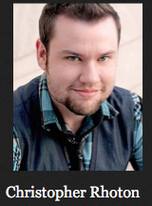

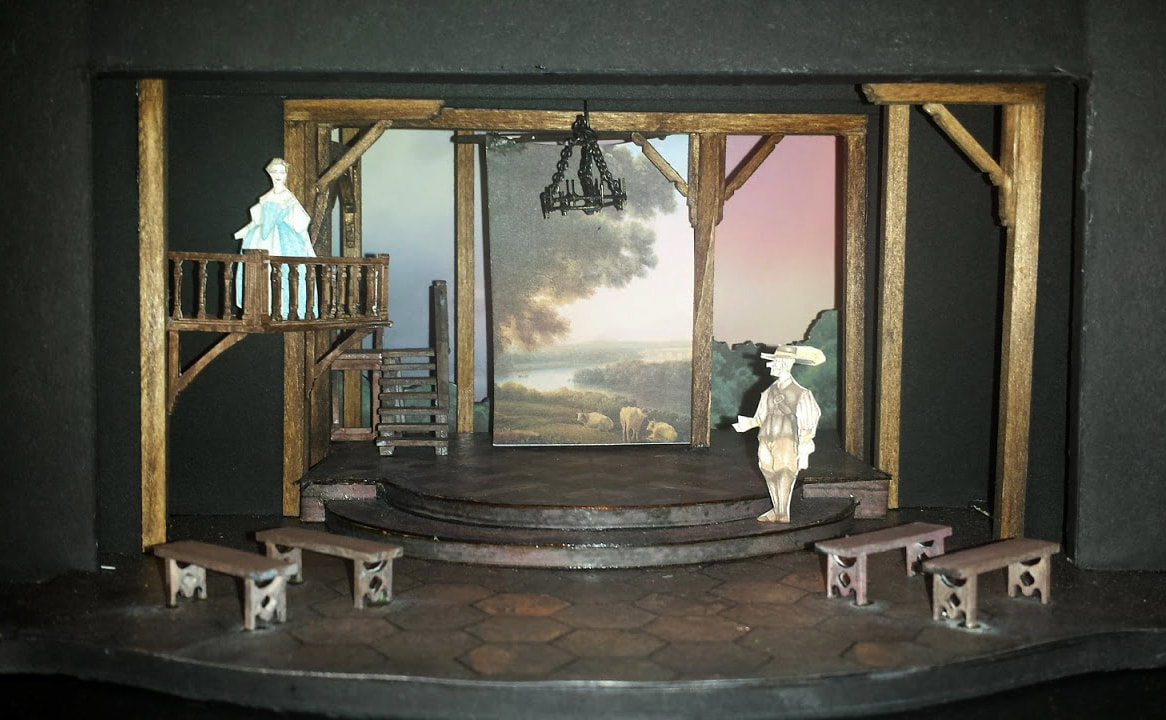
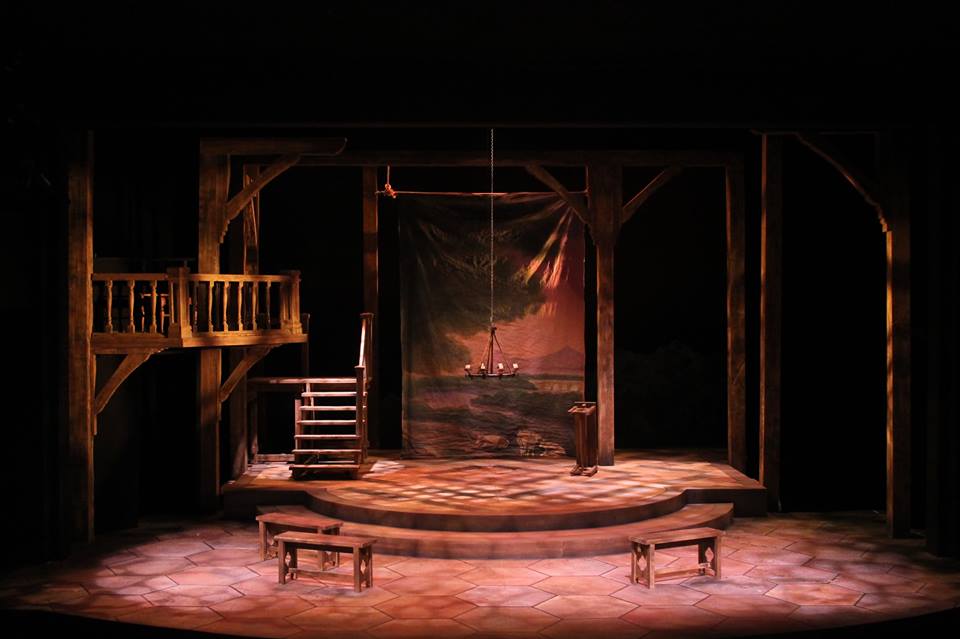




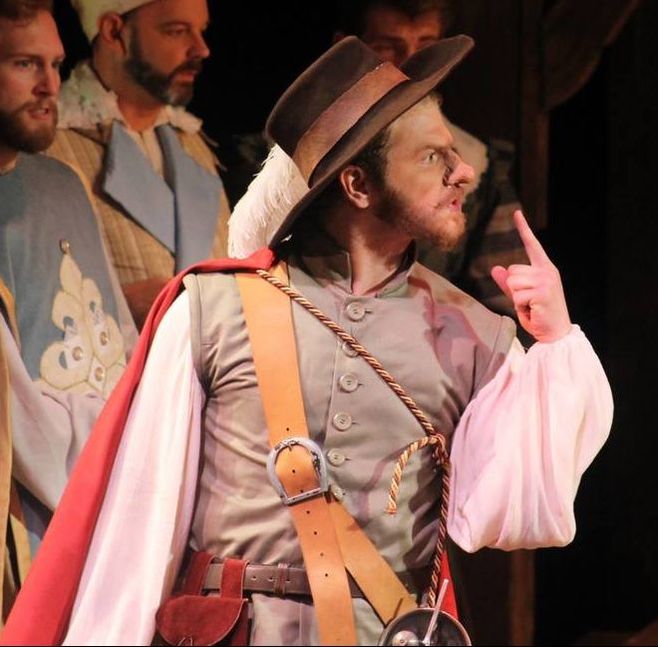











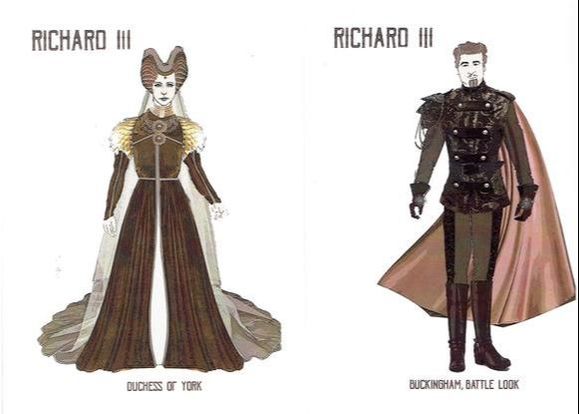


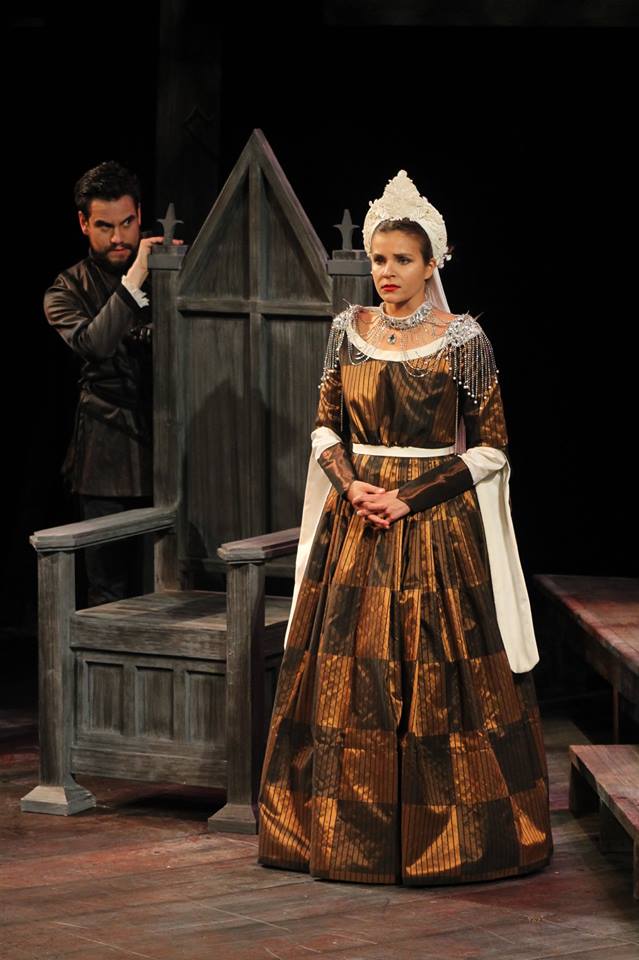






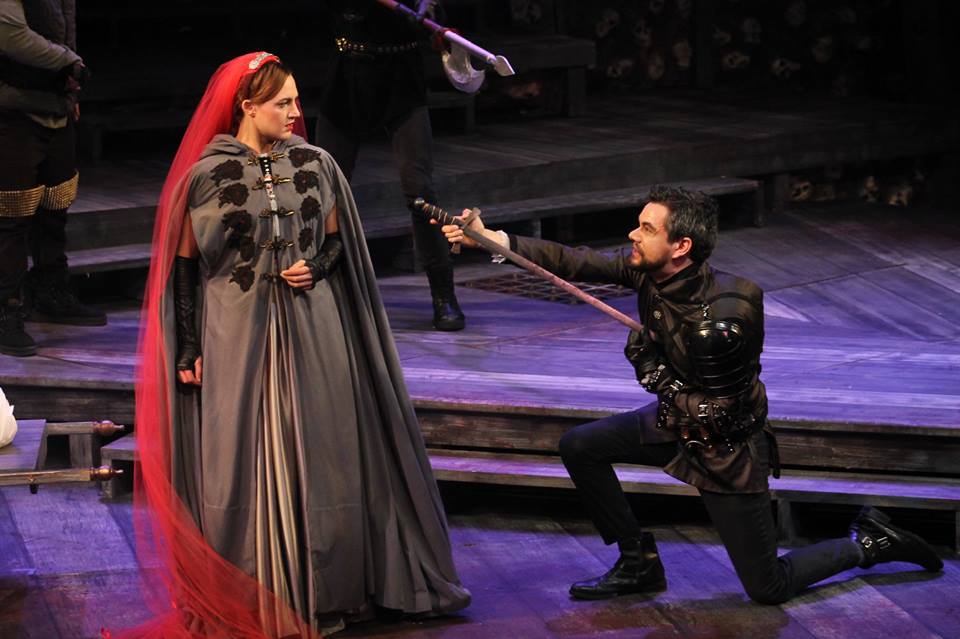

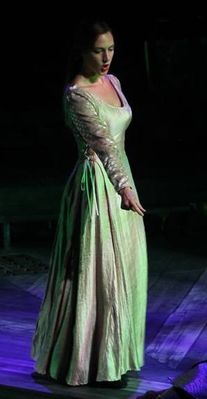







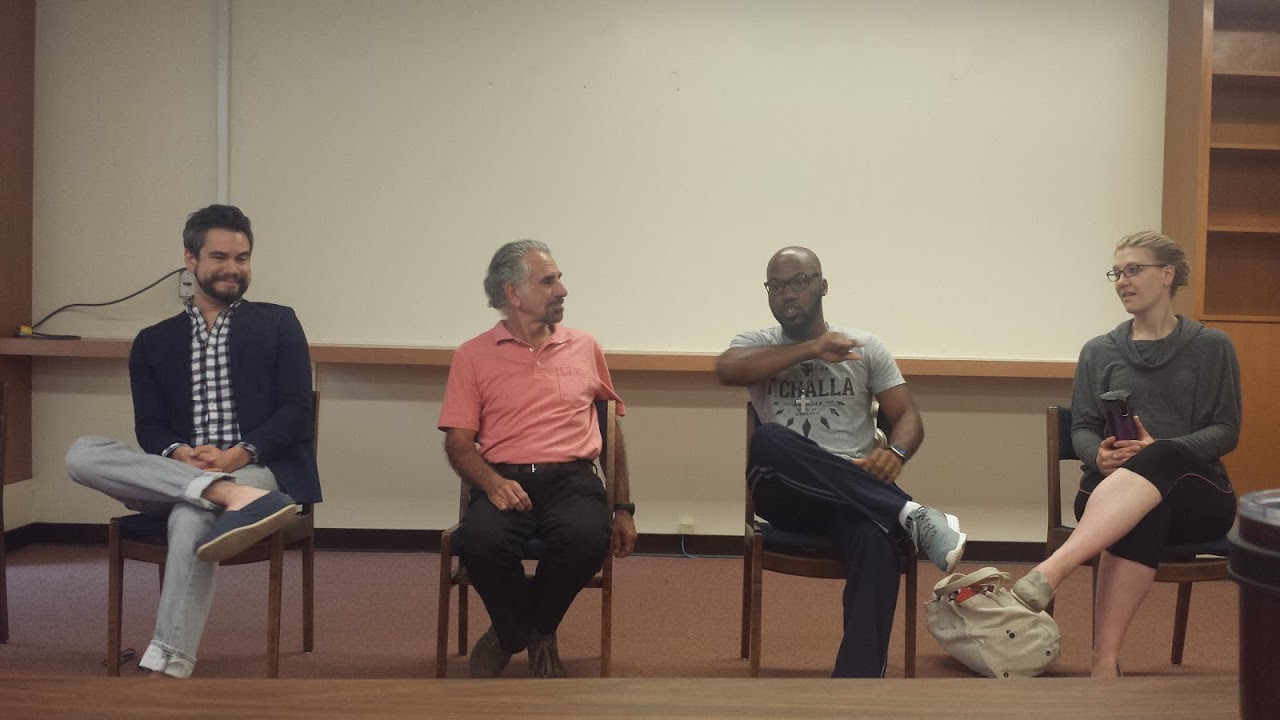





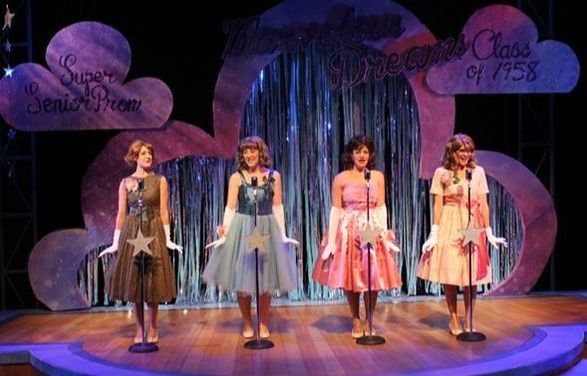


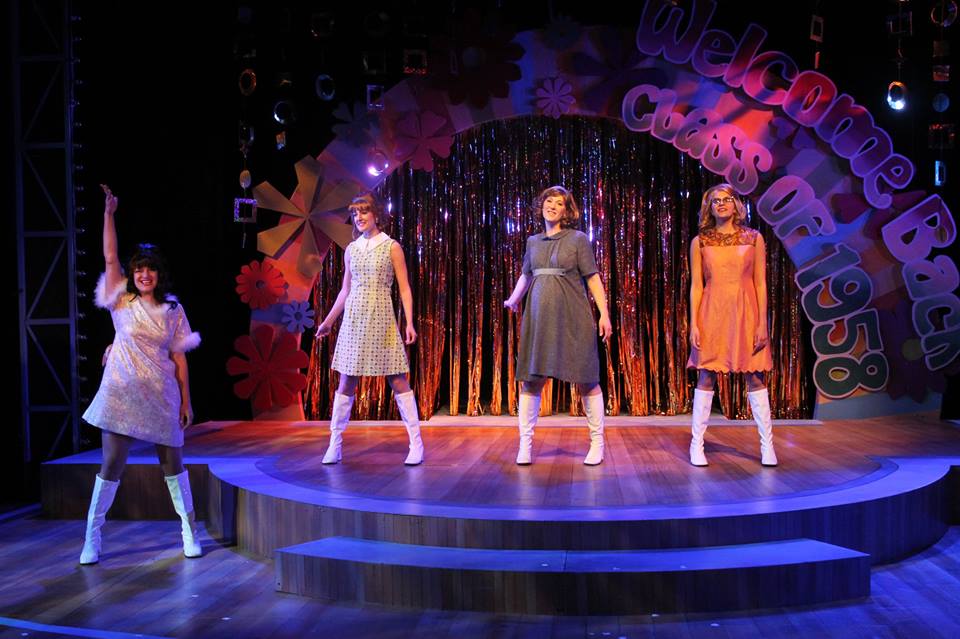





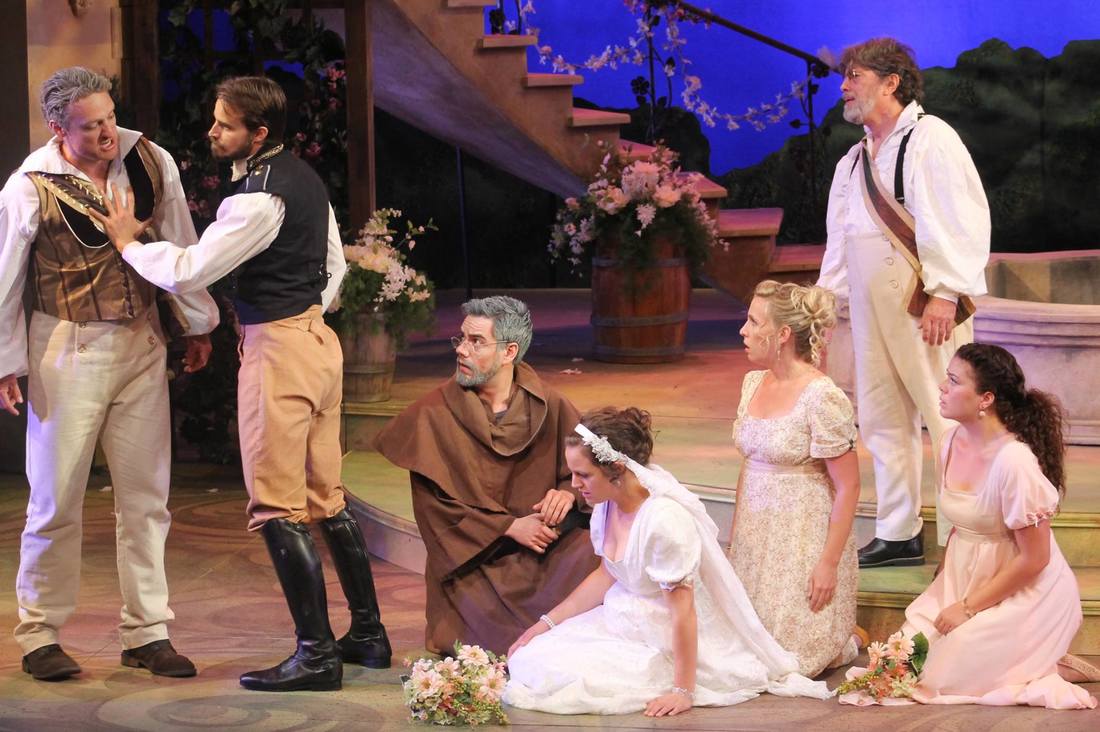



 RSS Feed
RSS Feed